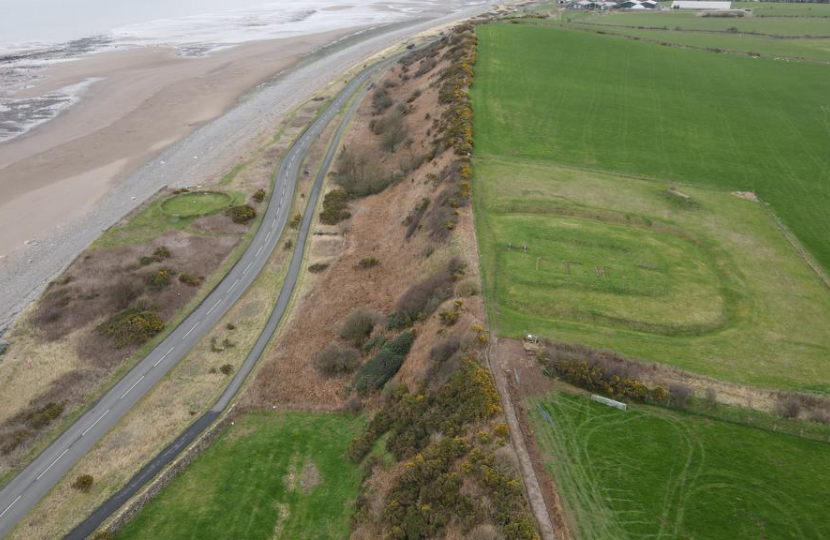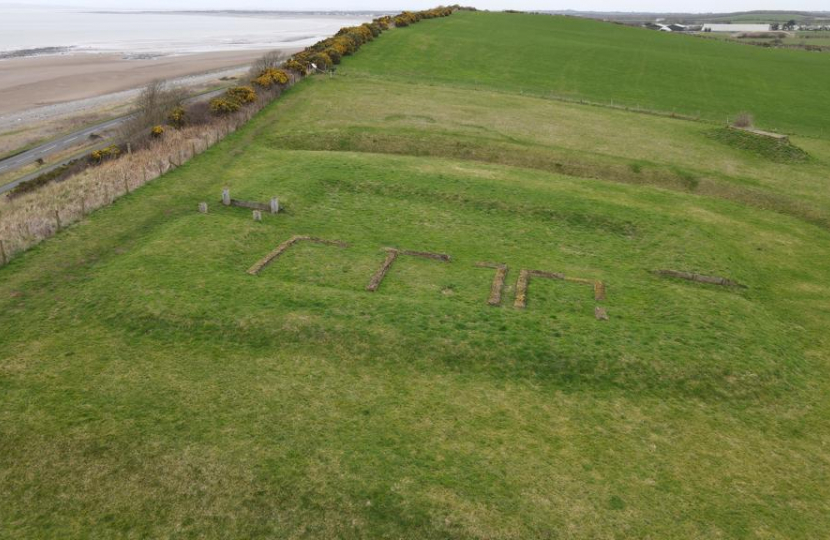Two important coastal heritage sites lie on either side of a the B5300 at Crosscanonby, just feet from one another,
They are divided by more than a main road, but by more than a millennium of history.
To the left of the road (the west) you can see the circular outline of Elizabethan salt pans, and to the right (the east), are the ramparts of Roman Milefortlet 21 on Swarthy Hill.
Travelling by car, perhaps en route to Silloth or Allonby, it is easy to overlook these coastal landmarks, which are best appreciated from an elevated position.
And some of those stopping to admire the views across the Solway to the hills of Galloway or walking their dogs on the beach would perhaps be forgiven for missing them altogether.
For around 700 years, salt was collected from water along the Cumbrian coast, and the Crosscanonby site [Grid Ref : NY 067401] represents a very well-preserved example. The large circular outline is known as the 'sleech pit' or 'kinch'.
Built at the same time as Hadrian's Wall, Milefortlet 21 is part of a designated World Heritage Site, Each milefortlet had two associated towers, similar to the turrets built along Hadrian's Wall. This example is strategically sited in a defensive position with excellent views over the Solway.
In more recent times, Mark Jenkinson MP has put strong pressure on the Cumbria County Council to protect the vital B5300 from coastal erosion, and to prevent it from falling into the sea.
This is also about protecting our heritage and ensuring that people are able to continue to access important historic sites like this.





